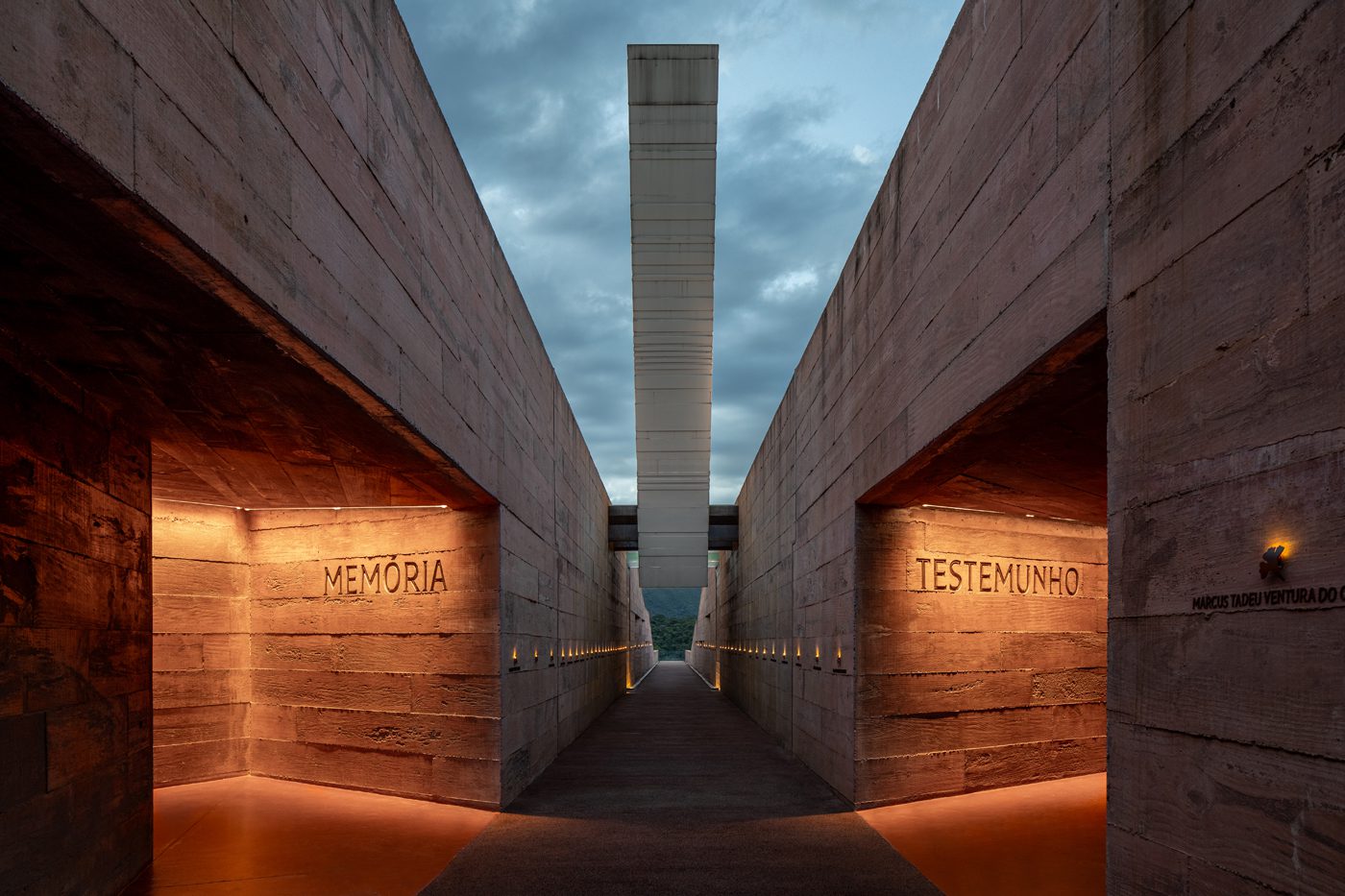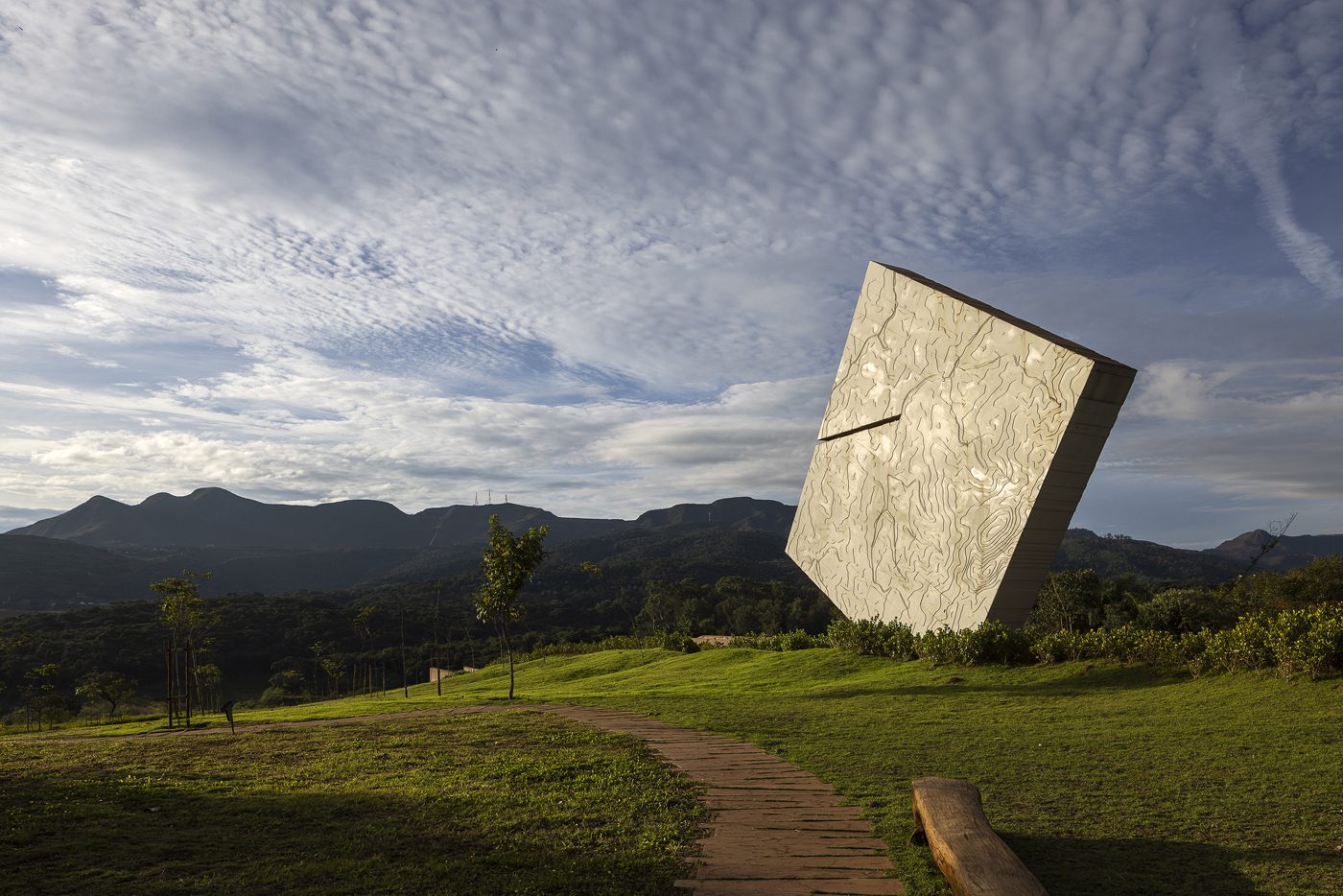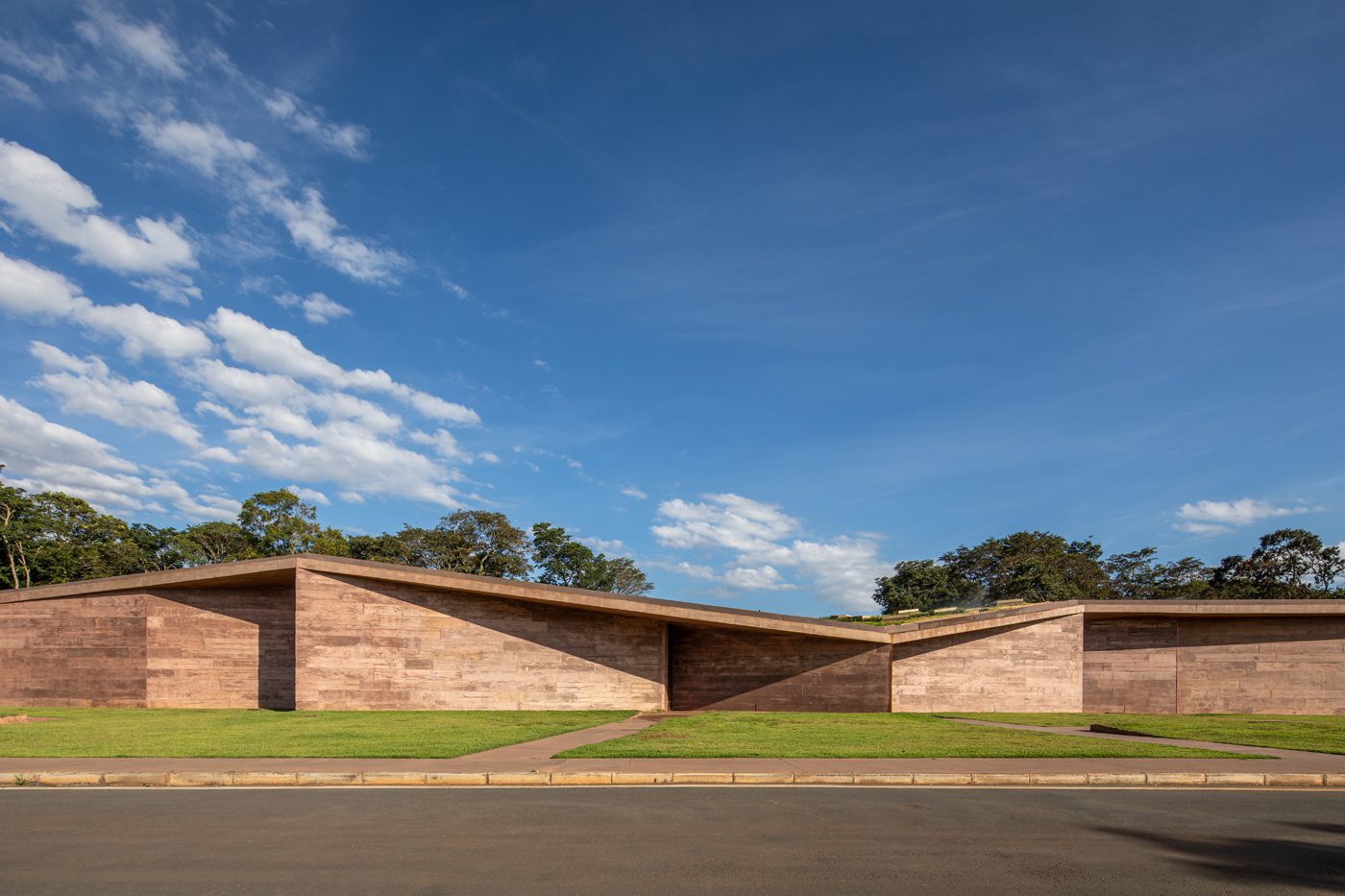Project implementation: Brazil
Project development: Brazil
The Brumadinho Memorial is a space of memory and resistance, built at the site of the Córrego do Feijão Mine dam collapse in Brumadinho, Minas Gerais, to honor the 272 victims of the country's greatest humanitarian tragedy. The result of a historic mobilization of family members gathered at Avabrum, the memorial arose from the desire to safeguard the victims' bodily parts and to reframe the mud-scarred territory, transforming it into a place of reflection, learning, and transformation. Open to the public in 2025, it is managed by the Brumadinho Memorial Foundation, created in 2023 to oversee its management and foster research and education projects on memory, the environment, law, architecture, and history.
The project, designed by architect Gustavo Penna and his team at Gustavo Penna Arquitetos Associados (GPAA), proposes a symbolic and sensitive path that begins with an entrance pavilion made of concrete stained with mining waste. Its angular, fragmented forms evoke the shock of the dam collapse, while beams of light penetrate the cracks and, every year at the exact time of the tragedy, illuminate a crystal druse in tribute to the "jewels," as family members call their loved ones.
From there, the fissure, a 230-meter gash in the ground, leads visitors to the epicenter of the disaster. The walls display the names of the victims, emerging one by one along the way. At the central point, the suspended sculpture known as the "weeping head" sheds tears onto the concrete and carries water, a symbol of memory and purification, to the reflecting pool next to the observation deck. Surrounding it, a grove of 272 yellow ipês blooms as a sign of life and continuity.
The Memory and Testimony spaces, designed in consultation with family members, house personal objects, records of the tragedy, and the victims' bodily parts, received with dignity and profound respect. For Carlos Antônio Leite Brandão, the memorial is a "fortress of grief," whose glimmers of light break through the darkness and transform silence into presence. Milton Hatoum describes the memorial as a civilizing gesture, capable of "giving aesthetic form to the tragedy" and inviting new generations to look critically at the past with an eye to the future.
The Brumadinho Memorial takes on the task of keeping the memory alive and affirming the dignity of the victims, refusing to be forgotten and reaffirming the right to memory as the foundation of collective life.




